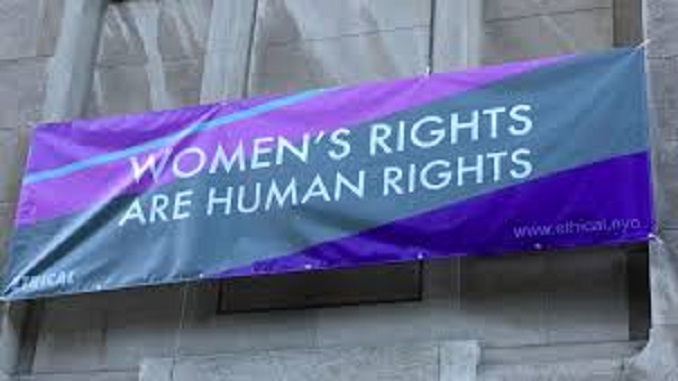Benefits of economic empowerment
- Women’s economic empowerment is central to realizing women’s rights and gender equality. Women’s economic empowerment includes women’s ability to participate equally in existing markets; their access to and control over productive resources, access to decent work, control over their own time, lives and bodies; and increased voice, agency and meaningful participation in economic decision-making at all levels from the household to international institutions.
- Empowering women in the economy and closing gender gaps in the world of work are key to achieving the 2030 Agenda for Sustainable Development and achieving the Sustainable Development Goals, particularly Goal 5, to achieve gender equality, and Goal 8, to promote full and productive employment and decent work for all; also Goal 1 on ending poverty, Goal 2 on food security, Goal 3 on ensuring health and Goal 10 on reducing inequalities.
- When more women work, economies grow. Women’s economic empowerment boosts productivity, increases economic diversification and income equality in addition to other positive development outcomes. For example, increasing the female employment rates in OECD countries to match that of Sweden, could boost GDP by over USD 6 trillion, recognizing, however, that. growth does not automatically lead to a reduction in gender-based inequality. Conversely, it is estimated that gender gaps cost the economy some 15 percent of GDP.
- Increasing women’s and girls’ educational attainment contributes to women’s economic empowerment and more inclusive economic growth. Education, upskilling and re-skilling over the life course – especially to keep pace with rapid technological and digital transformations affecting jobs—are critical for women’s and girl’s health and wellbeing, as well as their income-generation opportunities and participation in the formal labour market. Increased educational attainment accounts for about 50 per cent of the economic growth in OECD countries over the past 50 years. But, for the majority of women, significant gains in education have not translated into better labour market outcomes.
- Women’s economic equality is good for business. Companies greatly benefit from increasing employment and leadership opportunities for women, which is shown to increase organizational effectiveness and growth. It is estimated that companies with three or more women in senior management functions score higher in all dimensions of organizational performance.
The world of work
- Gender differences in laws affect both developing and developed economies, and women in all regions. Globally, over 2.7 billion women are legally restricted from having the same choice of jobs as men. Of 189 economies assessed in 2018, 104 economies still have laws preventing women from working in specific jobs, 59 economies have no laws on sexual harassment in the workplace, and in 18 economies, husbands can legally prevent their wives from working.
- Women remain less likely to participate in the labour market than menaround the world. Labour force participation rate for women aged 25-54 is 63 per cent compared to 94 per cent for men. When including younger (aged 15 years and up) and older women (aged 55 and up) , in 2018 women’s global labour force participation rate is event lower at 48.5 per cent, 26.5 percentage points below that of men.
- Women are more likely to be unemployed than men. In 2017, global unemployment rates for men and women stood at 5.5 per cent and 6.2 per cent respectively. This is projected to remain relatively unchanged going into 2018 and through 2021.
- Women are over-represented in informal and vulnerable employment. Women are more than twice as likely than men to be contributing family workers. From the latest available data, the share of women in informal employment in developing countries was 4.6 percentage points higher than that of men, when including agricultural workers, and 7.8 percentage points higher when excluding them.
- Globally, women are paid less than men. The gender wage gap is estimated to be 23 per cent. This means that women earn 77 per cent of what men earn, though these figures understate the real extent of gender pay gaps, particularly in developing countries where informal self-employment is prevalent. Women also face the motherhood wage penalty, which increases as the number of children a woman has increases.
- Women bear disproportionate responsibility for unpaid care and domestic work. Women tend to spend around 2.5 times more time on unpaid care and domestic work than men.The amount of time devoted to unpaid care work is negatively correlated with female labour force participation.
- Unpaid care work is essential to the functioning of the economy,but often goes uncounted and unrecognized. It is estimated that if women’s unpaid work were assigned a monetary value, it would constitute between 10 per cent and 39 per cent of GDP.
- Women are still less likely to have access to social protection. Gender inequalities in employment and job quality result in gender gaps in access to social protection acquired through employment, such as pensions, unemployment benefits or maternity protection. Globally, an estimated nearly 40 per cent of women in wage employment do not have access to social protection.
- Women are less likely than men to have access to financial institutions or have a bank account. While 65 per cent of men report having an account at a formal financial institution, only 58 per cent of women do worldwide.
- The digital divide remains a gendered one: most of the 3.9 billion people who are offline are in rural areas, poorer, less educated and tend to be women and girls.
- Women are less likely to be entrepreneurs and face more disadvantages starting businesses: In 40% of economies, women’s early stage entrepreneurial activity is half or less than half of that of men’s.
- Women are constrained from achieving the highest leadership positions: Only 5% of Fortune 500 CEOs are Women.
- Violence and harassment in the world of work affects women regardless of age, location, income or social status. The economic costs – a refelction of the human and social costs – to the global economy of discriminatory social institutions and violence against women is estimated to be approximately USD 12 trillion annually.
Sustainable Development
- Almost a third of women’s employment globally is in in agriculture, including forestry and fishing, but this may exclude self-employed and unpaid family workers. Yet, differences across countries and regions are striking. The share of women workers in agriculture is only 9.5 per cent in upper-middle-income countries and 2.6 per cent in high-income countries, while agriculture remains the most important employment sector for women in low-income and lower-middle-income countries.
- Women farmers have significantly less access to, control over, and ownership of land and other productive assets compared to their male counterparts. Land is perhaps the most important economic asset; women account for only 12.8 per cent of agricultural landholders in the world.
- Women and girls suffer most from the dearth of safely managed water and sanitation. Women and girls are responsible for water collection in 80 per cent of households without access to water on premises. Menstrual hygiene management is difficult in the absence of water, soap and gender-responsive sanitation facilities, whether at home, school or work.
- Women and girls are more likely to carry the burden of energy poverty and experience the adverse effects of lack of safe, reliable, affordable and clean energy. Indoor air pollution from using combustible fuels for household energy caused 4.3 million deaths in 2012, with women and girls accounting for 6 out of every 10 deaths.
- Environmental degradation and climate change have disproportionate impacts on women and children. Women often bear the brunt of coping with climate-related shocks and stresses or the health effects of indoor and urban pollution, which add to their care burden. As land, forest and water resources are increasingly compromised, privatized or “grabbed” for commercial investment, local communities and indigenous peoples, particularly women, whose livelihoods depend on them, are marginalized and displaced. Globally, women are 14 times more likely than men to die during a disaster.
Women migrant workers
- Women constitute approximately half of the 258 million migrants who live and work outside their countries of birth. Migrant women and girls outnumber men and boys in all regions except Africa and Asia; in some countries of Asia, men migrants outnumber women by about three to one.
- Despite gender inequalities in the labour market and gender wage gaps globally, women migrant workers were responsible for sending half of the estimated $601 billion in remittances worldwide in 2016.
- Research has shown that women migrant workers are often more likely than men to remit on a regular basis owing to women’s stronger links to family members and self-insurance motives underlining the link between a woman’s gendered caregiving role in the household and her increasing propensity to remit.
- Although many migrant women are highly skilled and well-educated, they face challenges in accessing foreign labour markets. Employment restrictions for migrants coupled with the de-skilling prevalent in gendered labour markets and pervasive stereotypes associated with migrant women in countries of destination, can negatively impact their job prospects. Indeed, many migrant women participate in low-skilled and precarious jobs characterized by low wages, poor working conditions, limited labour and social protections, and exposure to physical and sexual violence.
Women migrant workers are often concentrated in informal, low paid and unregulated work. The main sectors in which women migrant workers are employed are: services and retail (18.8 per cent), elementary occupations (17.3 per cent), craft and related trades (15.2 per cent), professionals (13.9 per cent) and clerks (12.3 per cent). Of the estimated 11.5 million international migrant domestic workers (in 2013), approximately 73.4 per cent were women.
Source: https://www.unwomen.org/en/what-we-do/economic-empowerment/facts-and-figures






коли закінчиться війна в україні 2022 скільки триватиме війна коли почалась друга світова війна
12 лет рабства